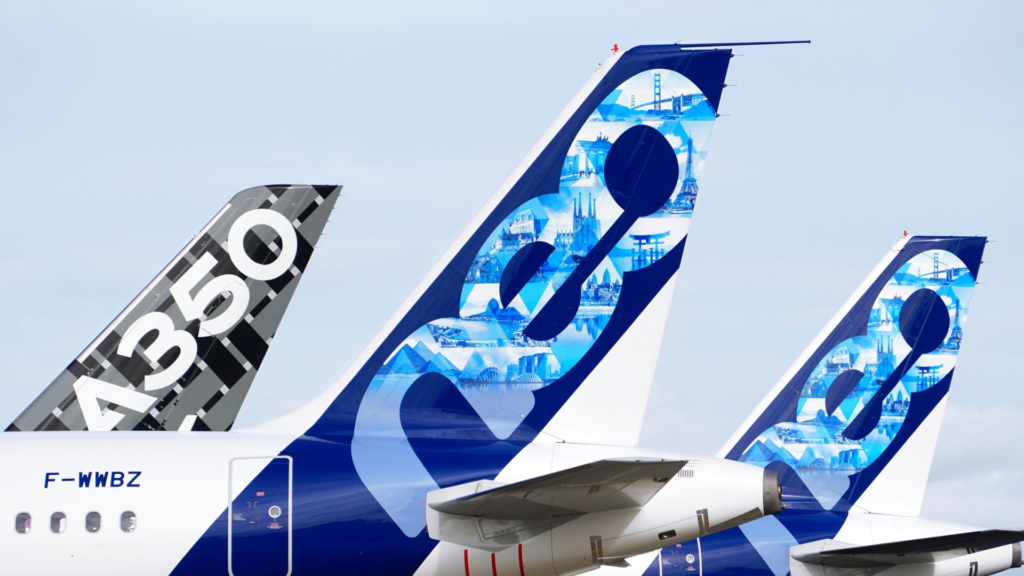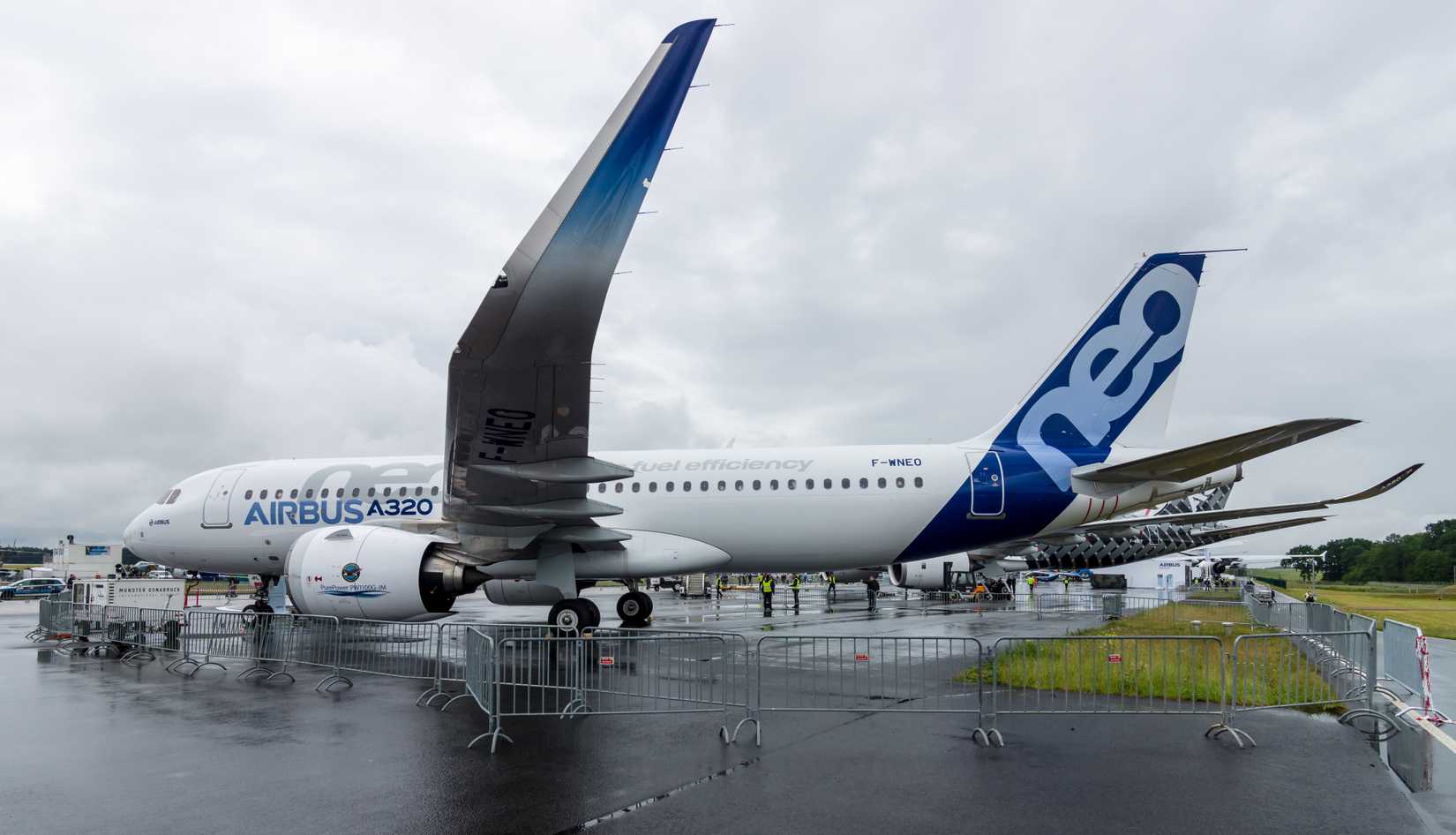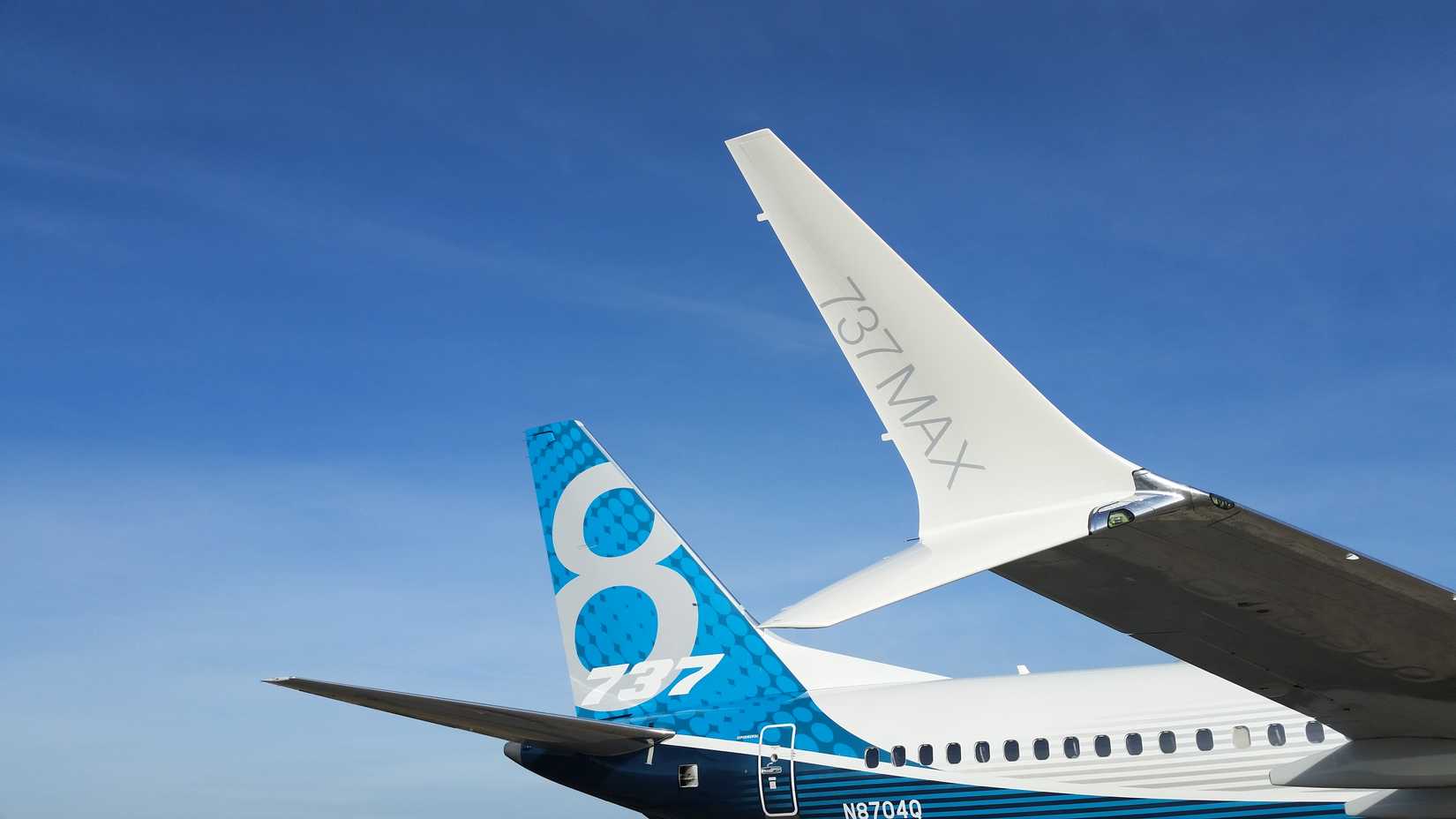Airbus and ![]() Boeing have been competing for more than half a century. Their rivalry has created a duopoly that dominates the commercial aircraft market and has driven the development of aircraft that now form the backbone of global airline fleets. Each new program has been aimed at improving efficiency, increasing capacity, and advancing technology.
Boeing have been competing for more than half a century. Their rivalry has created a duopoly that dominates the commercial aircraft market and has driven the development of aircraft that now form the backbone of global airline fleets. Each new program has been aimed at improving efficiency, increasing capacity, and advancing technology.
- Date Founded
-
December 18, 1970
- CEO
-
Guillaume Faury
- Headquarters Location
-
Toulouse, France
- Stock Code
-
AIR
- Business Type
-
Planemaker
- Key Product Lines
-
Airbus A220, Airbus A320, Airbus A330, Airbus A340, Airbus A350, Airbus A380
It all started when Airbus was founded to provide an alternative to the established American manufacturers. Over time, the company grew to match Boeing across nearly every aircraft category, from short-haul narrowbodies to long-haul widebodies. Today, the two manufacturers account for more than three-quarters of the world’s passenger fleet.
How The Rivalry Began
The US planemaker had been in the market long before Airbus entered. Boeing was established in 1916 and played a key role in shaping modern air travel. It introduced the Boeing 247 in the early 1930s, regarded as the world’s first modern airliner, and later launched the 707 in 1958, which ushered in the jet age. The company then added the 727, 737, and 747, all of which strengthened its position as the dominant manufacturer through the 1960s and 1970s. Airbus entered much later.
The firm was founded in 1969 as a consortium of French and German manufacturers, with British and Spanish partners joining soon after. Its aim was to provide a European alternative to the established US firms by pooling resources to build new widebody aircraft. The company’s first product, the A300, became the world’s first twin-engine widebody. It was designed to carry around 300 passengers and offered better efficiency, but was not intended to compete directly with Boeing’s 747.
Indeed, the ‘jumbo jet’ had more seats and was in strong demand. Instead, the A300 was aimed at medium-range markets that the 747 did not serve. The real competition began in 1978, when Airbus introduced the A310, a smaller derivative of the A300 with increased range. The aircraft arrived as the Lockheed L-1011 and Douglas DC-10 were losing ground, and Boeing responded with the 767-200. Both the A310 and 767 were built for the mid-sized segment, marking the beginning of a more direct rivalry.
The A320 Changed The Balance In The Short-Haul Market
In the late 1970s, Deregulation came into effect, reshaping the US airline industry. It created more competition and enabled the rapid growth of new and smaller carriers. As networks expanded, airlines looked for single-aisle jets with around 150 seats that could connect smaller city pairs at lower cost. This gave Boeing’s 737, which had been in service since 1967 and had already proven itself as the preferred narrowbody for airlines seeking flexibility and lower operating costs, an even stronger foothold.
Airbus, on the other hand, was still struggling to turn a profit and needed its own contender in this crucial market. In 1984, the company launched the A320 program, designed to compete directly with the 737. To differentiate its aircraft, the European planemaker introduced several innovations. The A320 was the first commercial jet to adopt fly-by-wire controls, replacing physical cables with electronic signals to computers.
It also featured a side-stick controller instead of the traditional yoke (a design difference that still sets Airbus and Boeing apart today). The aircraft initially faced skepticism, particularly after an accident during a demonstration flight at an air show in 1988, followed by other early crashes. This slowed acceptance and created doubts about the safety of Airbus’s new technologies. Even so, the A320’s design advantages gradually won over airlines.
US airlines, such as ![]() American Airlines, that had long favored Boeing, started to see the performance benefits of Airbus jets, and became open to placing orders. Its wider fuselage provided options for slightly larger seats, while its advanced cockpit commonality allowed pilots to move between A319, A320, and A321 variants with minimal retraining. Over time, the A320 family established itself as a true rival to the 737, and created a competition in the narrowbody segment that continues today.
American Airlines, that had long favored Boeing, started to see the performance benefits of Airbus jets, and became open to placing orders. Its wider fuselage provided options for slightly larger seats, while its advanced cockpit commonality allowed pilots to move between A319, A320, and A321 variants with minimal retraining. Over time, the A320 family established itself as a true rival to the 737, and created a competition in the narrowbody segment that continues today.
Airbus Pulls Ahead With The A320neo, But Boeing Still Leads The Widebody Domain
Airbus entered the narrowbody segment with no market share, yet steadily edged out rivals and captured more orders and deliveries year after year. In 2010, it introduced the A320neo, or “new engine option,” which offered airlines around 15% lower fuel consumption compared to earlier models. The aircraft quickly proved popular, and in 2011 Airbus booked a record 1,419 orders, more than double the previous year. Today, thousands of A320neo family aircraft are in active service.
According to ch-aviation, the European planemaker holds a backlog of more than 7,100 units across the line. It has delivered nearly 4,100 jets out of more than 11,000 orders, equal to about 36% of its commitments. By contrast, Boeing introduced the 737 MAX to remain competitive but has delivered just under 2,000 aircraft from over 6,700 commitments, or around 28%. On the widebody front, Airbus introduced the twin-engine A330 and four-engine A340 in the early 1990s.
|
Specifications |
||
|---|---|---|
|
Overall Length |
146 feet (44.51 meters) |
129 feet 8 inches (39.52 meters) |
|
Wingspan |
117 feet 5 inches (35.80 meters) |
117 feet 10 inches (35.9 meters) |
|
Range |
4,700 nautical miles (8,700 kilometers) |
3,500 nautical miles (6,480 kilometers) |
|
Max Takeoff Weight |
101 tonnes |
82.2 tonnes |
|
Capacity |
Up to 244 |
Up to 178 (in two-class layout) Up to 210 (for 737 MAX 8-200) |
The A340 entered service toward the end of the four-engine era, struggled to gain traction, and its production ended after just 377 orders. The A330, however, became a commercial success with more than 1,700 orders to date. Both the A330 and A340 competed directly with the Boeing 767 and 777, but market demand shifted toward efficient twin-engine aircraft, which gave Boeing a significant advantage. Airbus also made a late entry into the jumbo category with the A380 to compete with the 747.
While the aircraft impressed with capacity and passenger comfort, global demand for quadjets declined, and production ended in 2021. Instead, Airbus’s more recent twin-engine A350 family has become its flagship widebody, and it offers ultra-long-range capability. Boeing has countered with the 787 family and continues development of the delayed 777X. Despite Airbus’s progress, Boeing still dominates the widebody market with nearly 56% of the global fleet and a backlog of over 1,500 jets.
Boeing’s Troubles Gave Airbus The Upper Hand
Overall, Airbus still holds the edge over Boeing, and much of that advantage has come from the difficulties its rival has faced. One of the most significant setbacks for the US planemaker has been the 737 MAX program. It was launched under pressure as the A320neo gained traction, and Boeing opted to upgrade its Next Generation platform rather than pursue a clean-sheet design. A key change was the fact that the MAX introduced larger, more fuel efficient CFM LEAP-1B engines.
These had to be mounted higher and further forward on the wing to fit the 737’s low fuselage, which altered the jet’s aerodynamics, creating a greater tendency for the nose to pitch up during steep climbs. To keep handling consistent with earlier variants, Boeing added the Maneuvering Characteristics Augmentation System (MCAS). The software automatically adjusted the horizontal stabilizer to lower the nose if the aircraft climbed too steeply.
However, fatal accidents in 2018 and 2019 soon exposed flaws in the MAX program. Both crashes involved the MAX 8 and were tied to problems with the MCAS, which repeatedly forced the aircraft’s nose down based on faulty sensor readings. Those crashes led to the worldwide grounding of the type in March 2019, which lasted until November 2020 and froze deliveries for nearly two years. Although the MAX has since returned to service, problems have continued.
Earlier last year, an Alaska Airlines MAX 9 lost a door panel during a climb. The aircraft landed safely, but investigations found that the bolts securing the plug had not been installed properly. Indeed, the incident exposed major quality control lapses at the planemaker. In response, the FAA has limited MAX production to 38 aircraft per month. These restrictions, combined with ongoing delays, have pushed some carriers to place new orders with Airbus instead.
Airbus Leads, But Faces Its Own Production Hurdles
Indeed, the European planemaker has pulled ahead of its American rival by several measures. In recent years, it has outpaced Boeing in net profit, new aircraft orders, deliveries, and overall backlog. Even so, the company faces hurdles of its own. One of the major issues is its engine supply chain. Shortages have forced dozens of completed airframes to sit at Airbus factories without engines. In July, the company said it had about 60 of these so-called ‘gliders,’ up from 40 a month earlier.
These disruptions have come from both of its key providers: CFM International, which builds the LEAP engines, and Pratt & Whitney, which has dealt with workforce strikes this year over contract disputes. As a result, A320neo family production has consistently fallen short of Airbus’ stated goal of 50 aircraft per month in 2025. Despite this, the European planemaker continues to reaffirm its target of reaching 75 aircraft per month by 2027.
To support this, it has added a new final assembly line at its Mobile, Alabama, plant, which is expected to begin operations later this year. Overall, Airbus deliveries have remained lower than last year, but the planemaker has kept its forecast of 820 aircraft handed over by year-end. Furthermore, both narrowbody platforms (A320 and 737) are old and now near the end of their evolutionary timeline, which has prompted analysts and investors to ask what comes next.
China is pressing ahead with its own entrant, the Comac C919, which has entered service on domestic routes but is not yet certified in Europe or the US. In addition, as reported by Fortune, Boeing CEO Kelly Ortberg has said the company is holding back on a new aircraft program until engine technology advances and cash flow improves. Airbus, on the other hand, has floated the possibility of a hydrogen-powered aircraft in the mid-2030s, potentially built around a ‘flying wing’ concept.
What Comes Next For The Airbus-Boeing Duopoly?
On the whole, we will just have to wait and see what the future holds. However, in terms of the Airbus–Boeing rivalry, the European manufacturer has edged out its US rival in many areas, as the European planemaker currently leads in single-aisle deliveries, net orders, and overall backlog. Meanwhile, Boeing is still working to recover from years of setbacks.
Looking at the rivalry more broadly, it has shaped the development of modern aviation. From the dawn of the jet age to today’s efficient long-haul twins, nearly every major advance in commercial aircraft has been influenced by the competition between the two. Airlines have benefited from more choice, better efficiency, and steadily improving economics. Passengers, in turn, have gained access to longer routes, wider networks, and, in many cases, better comfort.
At the same time, the duopoly has left the industry heavily dependent on just two manufacturers. Therefore, production disruptions at either Airbus or Boeing ripple across airlines worldwide. Now, China is seeking to build a foothold through the Comac C919, and both Airbus and Boeing are exploring radically new concepts for the future; the next decade may determine whether the duopoly continues unchallenged or begins to shift.








